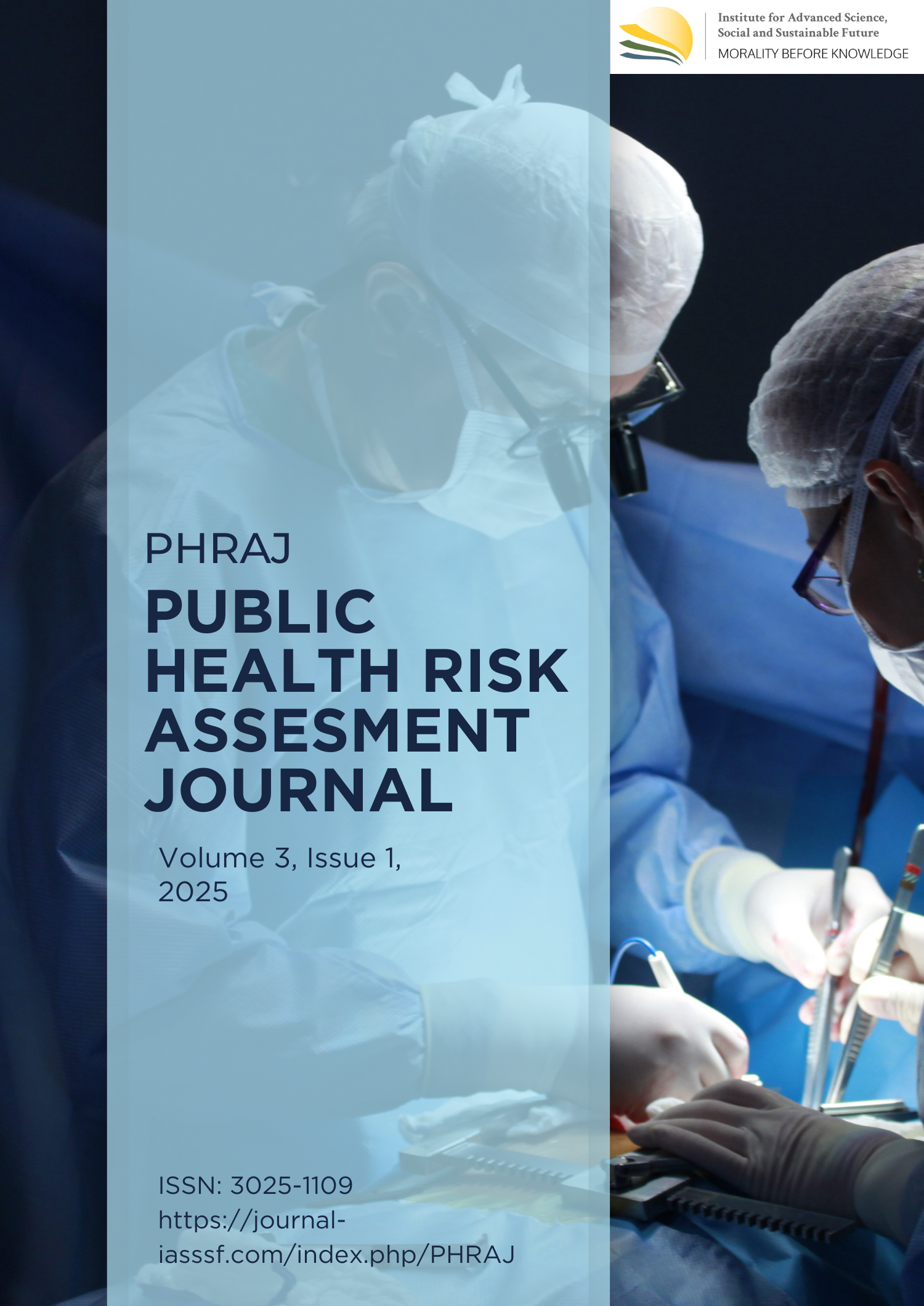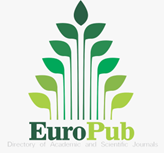Innovative utilization of chicken feet bones (Gallus gallus domesticus) and mung beans (Vigna radiata) in crackers: A sustainable nutritional approach to combat childhood malnutrition
DOI:
https://doi.org/10.61511/phraj.v3i1.2025.1822Keywords:
childhood, nutritional, sustainable, utilizationAbstract
Background: Malnutrition leads to weakened immunity, making children more susceptible to infectious diseases and affecting future generations if not promptly addressed. Chicken feet bones (Gallus gallus domesticus) are a food waste product rich in calcium, while mung beans (Vigna radiata) are high in vitamins and minerals, making them potential sources of additional nutrition. This study aims to investigate the processing of Hi-C Crackers using chicken feet bones and mung beans, analyze its macronutrient content qualitatively, and determine its calcium content qualitatively. Methods: This experimental research involved processing Hi-C Crackers and analyzing their nutritional composition qualitatively. Findings: Hi-C Crackers were successfully processed using a 2:1 ratio of chicken feet bones to mung beans. The macronutrient content was determined using qualitative reagent tests: Lugol's iodine test for carbohydrates (blue-black color), Biuret test for protein (purple color), and Benedict’s test for glucose (greenish-blue color). Calcium content was confirmed using ammonium oxalate and acetic acid reagents, producing a brownish-white precipitate. Conclusion: Hi-C Crackers is a nutritious snack with essential macronutrients and calcium. Novelty: This research introduces a new food innovation utilizing commonly discarded ingredients to combat malnutrition.
References
Agurs-Collins, T., Alvidrez, J., ElShourbagy Ferreira, S., Evans, M., Gibbs, K., Kowtha, B., Pratt, C., Reedy, J., Shams-White, M., & Brown, A. G. (2024). Perspective: Nutrition Health Disparities Framework: A Model to Advance Health Equity. Advances in Nutrition, 15(4), 100194. https://doi.org/10.1016/j.advnut.2024.100194
Araújo, Í. B. S., Lima, D. A. S., Pereira, S. F., Paseto, R. P., & Madruga, M. S. (2021). Effect of storage time on the quality of chicken sausages produced with fat replacement by collagen gel extracted from chicken feet. Poultry Science, 100(2), 1262–1272. https://doi.org/10.1016/j.psj.2020.10.029
Black, R. E., Victora, C. G., Walker, S. P., Bhutta, Z. A., Christian, P., de Onis, M. & Uauy, R. (2013). Maternal and child undernutrition and overweight in low-income and middle-income countries. The Lancet, 382(9890), 427-451. https://doi.org/10.1016/S0140-6736(13)60937-X
Bourassa, M. W., Abrams, S. A., Belizán, J. M., Boy, E., Cormick, G., Quijano, C. D., Gibson, S., Gomes, F., Hofmeyr, G. J., Humphrey, J., Kraemer, K., Lividini, K., Neufeld, L. M., Palacios, C., Shlisky, J., Thankachan, P., Villalpando, S., & Weaver, C. M. (2022). Interventions to improve calcium intake through foods in populations with low intake. Annals of the New York Academy of Sciences, 1511(1), 40–58. https://doi.org/10.1111/nyas.14743.
Central Bureau of Statistics (Indonesia). (2023). Human Development Index (HDI) 2023. VCentral Bureau of Statistics.
Chisti, M. J., Salam, M. A., Ashraf, H., Faruque, A. S. G., Bardhan, P. K., Shahid, A. S. M. S. B., ... & Sack, D. A. (2020). Clinical risk factors of death from pneumonia in children with severe acute malnutrition in an urban critical care ward of Bangladesh. Pediatrics, 125(5), e985-e993. https://doi.org/10.1542/peds.2009-1519.
Clark, K. L., Sebastianelli, W., Flechsenhar, K. R., Aukermann, D. F., Meza, F., Millard, R. L., & Deitch, J. R. (2016). 24-Week study on the use of collagen hydrolysate as a dietary supplement in athletes with activity-related joint pain. Current Medical Research and Opinion, 24(5), 1485-1496. https://doi.org/10.1185/030079908X291967.
de Onis, M., Branca, F. (2019). Childhood stunting: A global perspective. Maternal & Child Nutrition, 12(S1), 12-26. https://doi.org/10.1111/mcn.12517.
Dyall, S. C. (2015). Long-chain omega-3 fatty acids and the brain: A review of the independent and shared effects of EPA, DPA, and DHA. Frontiers in Aging Neuroscience, 7, 52. https://doi.org/10.3389/fnagi.2015.00052.
Foolchand, A., Ghazi, T., & Chuturgoon, A. A. (2022). Malnutrition and Dietary Habits Alter the Immune System Which May Consequently Influence SARS-CoV-2 Virulence: A Review. International Journal of Molecular Sciences, 23(5), 2654. https://doi.org/10.3390/ijms23052654.
Georgieff, M. K. (2011). Long-term brain and behavioral consequences of early iron deficiency. Nutrition Reviews, 69(S1), S43-S48. https://doi.org/10.1111/j.1753-4887.2011.00432.x.
Ghosh, S., Sinha, A., & Biswas, S. (2022). Gut microbiota in malnutrition: Evidence and mechanisms. Microbiome Research Reports, 1(1), 1-12. https://doi.org/10.1016/j.mirr.2022.04.002.
Global Nutrition Report. (2020). Global Nutrition Report: Action on equity to end malnutrition. Bristol, UK: Development Initiatives.
Hawkes, C. P., & Grimberg, A. (2015). Insulin-Like Growth Factor-I is a Marker for the Nutritional State. Pediatric Endocrinology Reviews, 13(2), 499–511. https://pubmed.ncbi.nlm.nih.gov/26841638/
Hernández-Ledesma, B., Hsieh, C. C., & de Lumen, B. O. (2019). Mung bean proteins and peptides: Nutritional, functional and bioactive properties. Food Science and Human Wellness, 8(3), 173-180. https://doi.org/10.1016/j.fshw.2019.07.001.
Karpouzos, A., Diamantis, E., Farmaki, P., Savvanis, S., & Troupis, T. (2017). Nutritional aspects of bone health and fracture healing. Journal of Osteoporosis, 2017, 421-432. https://doi.org/10.1155/2017/4218786.
Mamun, A. A., Yudhastuti, R., & Mahmudiono, T. (2024). Utilization of biscuits as nutritional intervention to reduce stunting among children: A systematic review. African Journal of Reproductive Health, 28(10s), 376–385. https://doi.org/10.29063/ajrh2024/v28i10s.40.
Pasricha, S. R., Tye-Din, J., Muckenthaler, M. U., & Drakesmith, H. (2021). Iron deficiency. The Lancet, 397(10270), 233-248. https://doi.org/10.1016/S0140-6736(20)32594-0.
Prentice, A. (2019). Nutritional rickets around the world. The Journal of Clinical Investigation, 129(6), 2311-2320. https://doi.org/10.1172/JCI125707.
Shankar, A. H., & Prasad, A. S. (1998). Zinc and immune function: The biological basis of altered resistance to infection. The American Journal of Clinical Nutrition, 68(2 Suppl), 447S-463S. https://doi.org/10.1093/ajcn/68.2.447S.
Sharma, S., Padwad, Y. S., Balapure, A. K., & Yadav, A. S. (2020). Collagen peptides as functional food ingredients for controlling muscle atrophy. Food & Function, 11(8), 6987-7005. https://doi.org/10.1039/D0FO01068B.
Wessells, K. R., & Brown, K. H. (2012). Estimating the global prevalence of zinc deficiency: Results based on zinc availability in national food supplies and the prevalence of stunting. PLoS One, 7(11), e50568. https://doi.org/10.1371/journal.pone.0050568.
Zague, V. (2008). A new view concerning the effects of collagen hydrolysate intake on skin properties. Archives of Dermatological Research, 300(9), 479-483. https://doi.org/10.1007/s00403-008-0895-7.
Zhang, Y., Xie, L., Gunasekaran, S., & Dai, S. (2018). Functional properties of hydrolyzed collagen from chicken feet as influenced by enzymatic hydrolysis conditions. Food Chemistry, 253, 143-150. https://doi.org/10.1016/j.foodchem.2018.01.142.
Downloads
Published
How to Cite
Issue
Section
Citation Check
License
Copyright (c) 2025 Anghia Callista Vaci Malakiano, Nor Isnaeni Dwi Arista, Yochidamai Akhsanitaqwim

This work is licensed under a Creative Commons Attribution 4.0 International License.














